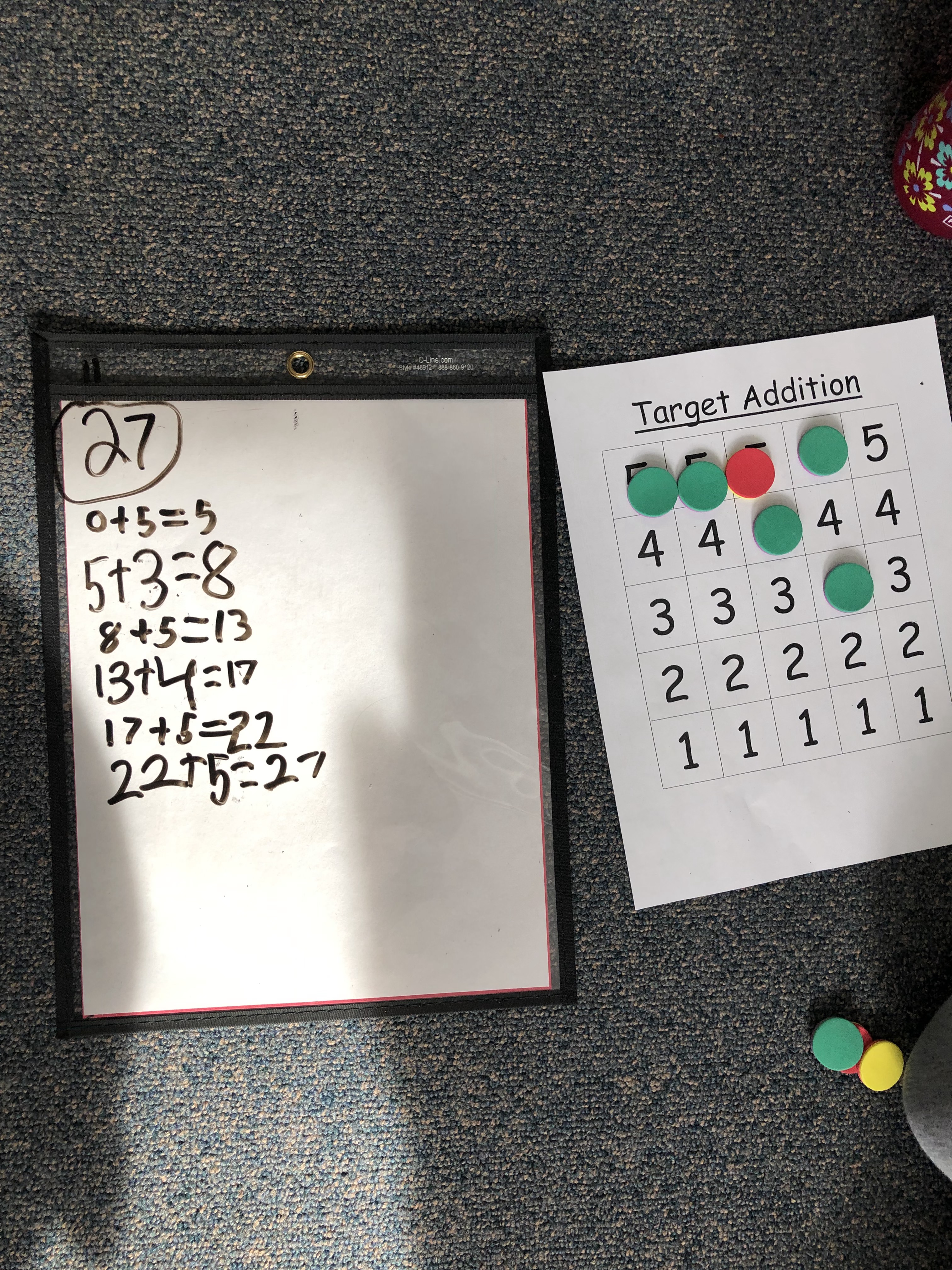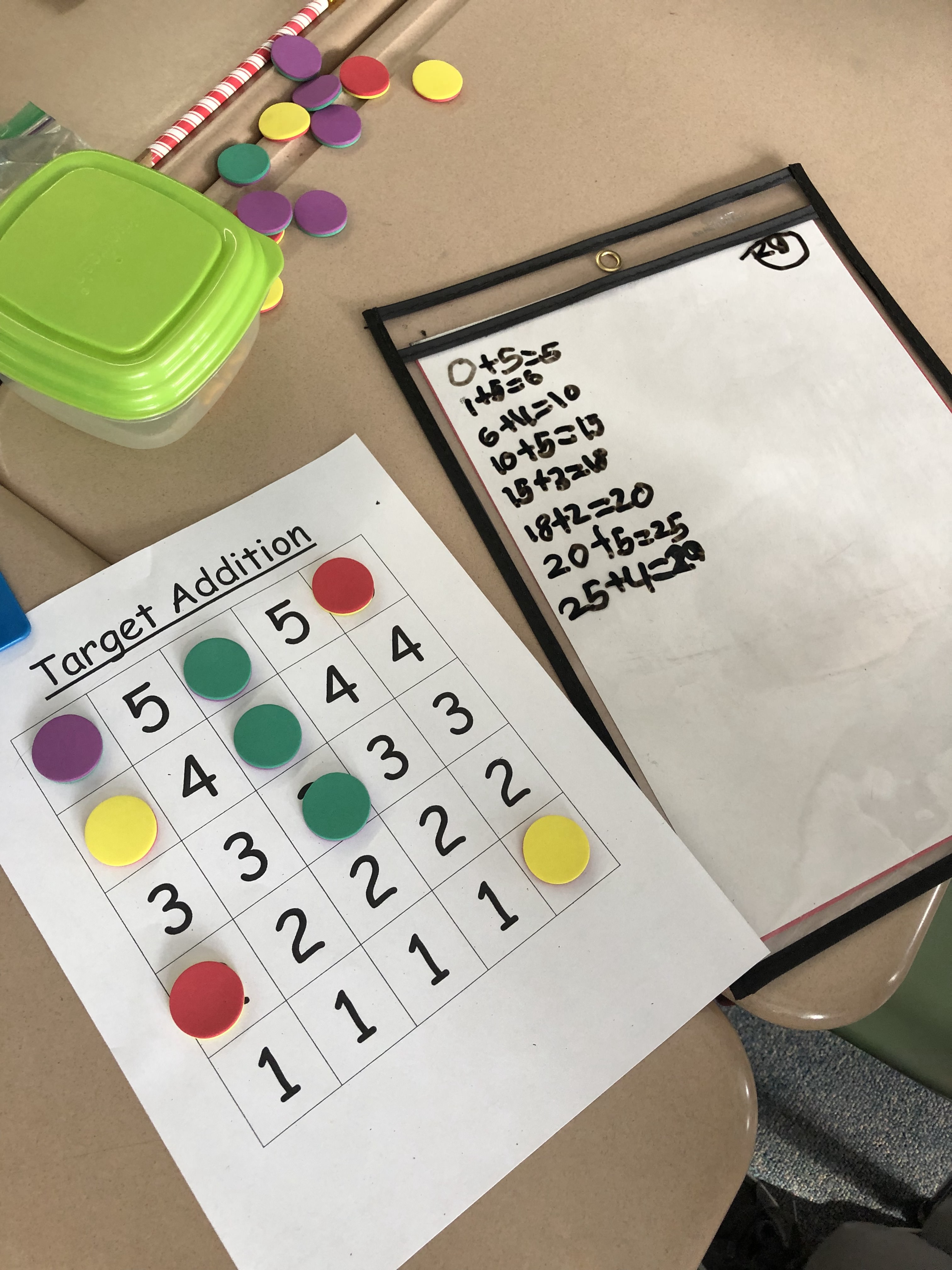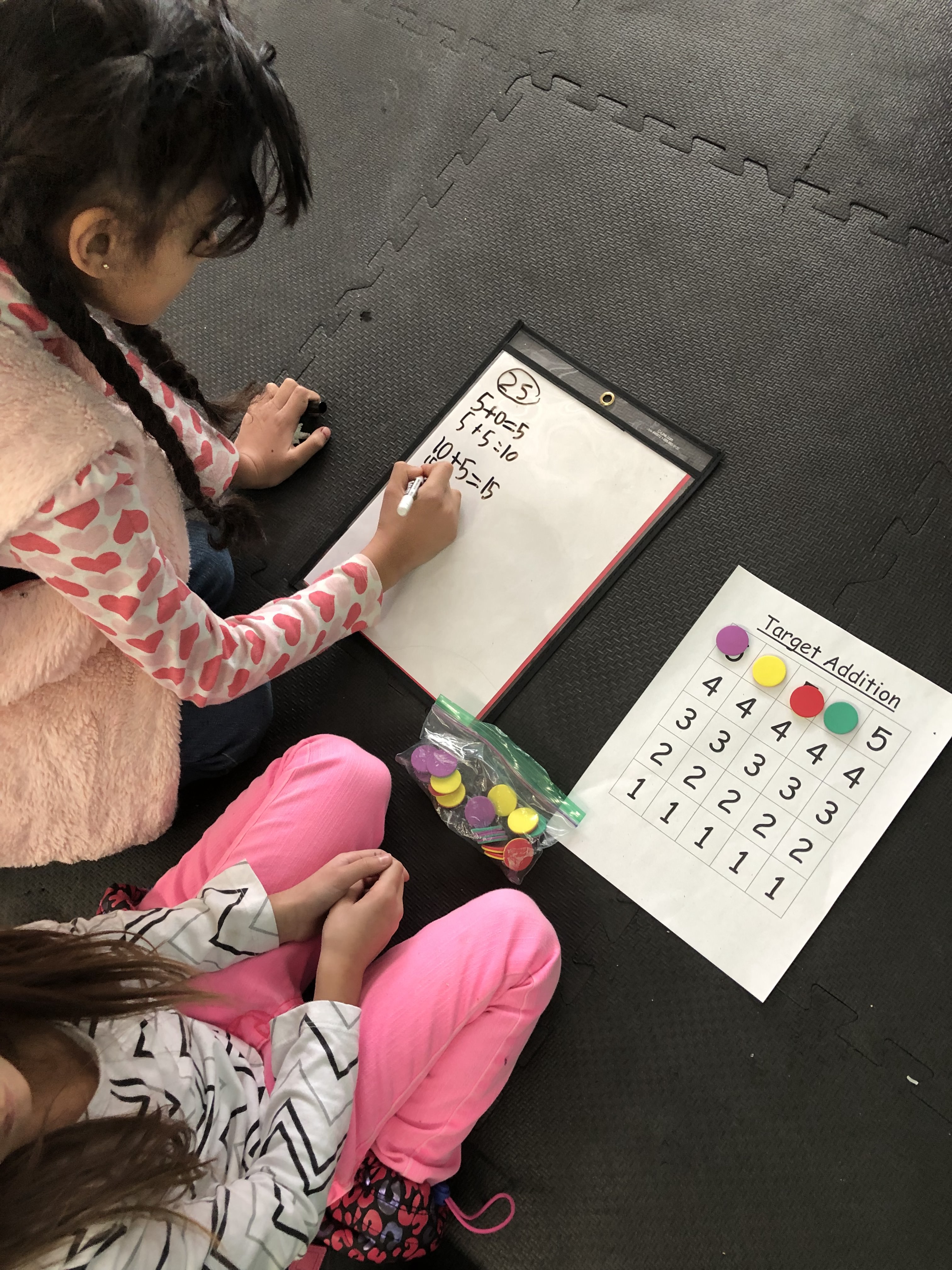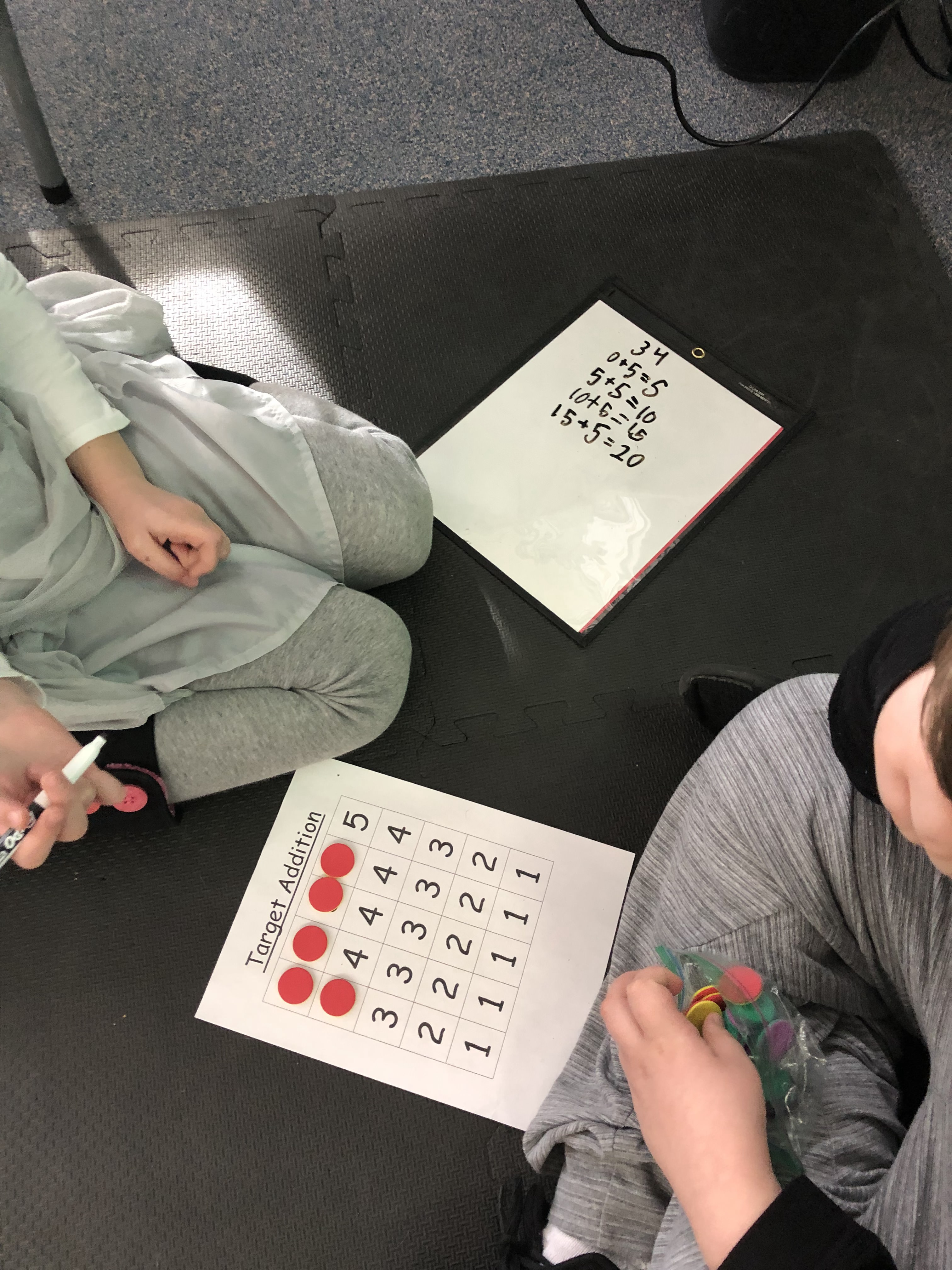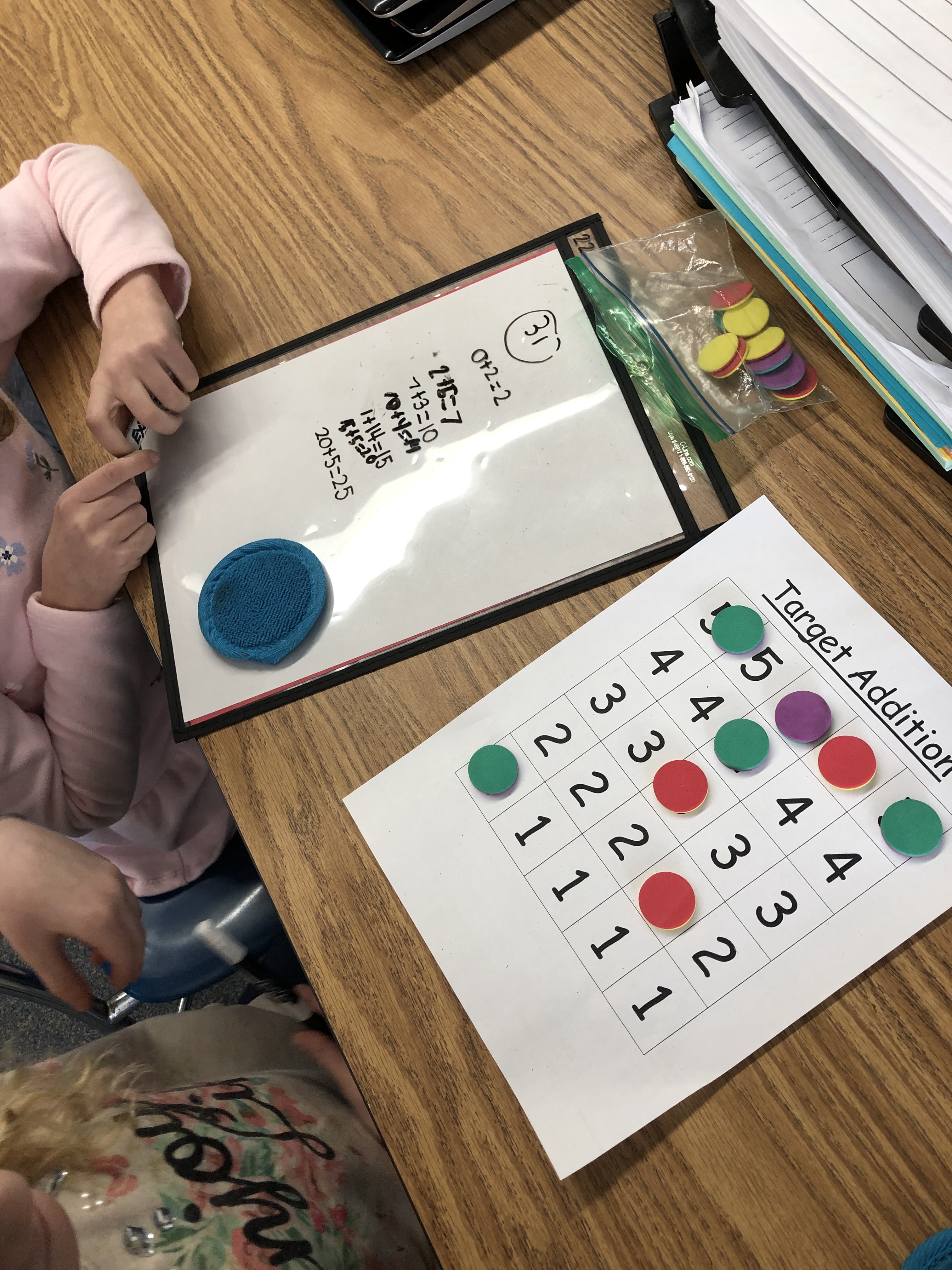A Month Of Games: Target Addition
Hello, it's Emily again!! Kristin said she was doing a month of games and I had to share this game after a group of kiddos LOVED it a few weeks ago!! I teach 4th graders, but help out in a 2nd grade classroom focusing on addition fluency. I introduced this game in a whole group setting after they did their mid-year benchmark testing. They were in need of a fun, skill-based game that would get them excited to keep building their fluency. Target Addition is just that...an addition game where the kids are trying to add up to a target number.
I've always been a big fan of giving students "controlled freedom". What does that mean? I want to enable the students I work with to feel like they have a say in their education, but with choices I provide to them. That's where this game comes into play, the kids get to pick their target number. With my 2nd grade group I keep them between 25-35 for their target numbers, but this can easily be adjusted for different grade levels.
Materials Needed:
- Game Board
- Game pieces (in class I use counters, but you can use anything)
- Students in pairs (if needed, you can do a group of 3)
- Paper and Pencil (if you make them write out their addition equations...optional)
Directions:
- Decide who is going to be the leader for the first round. The leader gets to choose the target number from the range for the round. For example, let's say the target number fcr this round is 32.
- The partner would then use a game piece to cover over any number on the board. Let's say they play it on a 3.
- **As the teacher, you have two options here, either have the students say the oral equation to give the running sum, or have them record the equation on paper. If you have students say it orally, this child would say, "0 + 3 = 3." If you want them to record the child would write "0 + 3 = 3."
- The next player places a game piece on any number, and either says the equation or writes it. Let's say they place it on a 2. This child would either say, "3 + 2 = 5" or write " 3 + 2 = 5."
- Play continues in this same manner with players taking turns covering a number and giving the running sum either orally or written.
- The student who gives the equation that lands exactly on the Target Number wins the round.
If students need to use resources to help with their addition, let them. The purpose of this game is to work on building fluency and some students might not be at the abstract level yet. Some of the students I work with use the following resources: number lines, hundreds charts, base-ten blocks, and just paper & pencil.
Differentiation with Target Addition:
There are several easy ways to differentiate this game. First, change the target number. For primary grades, cut off the rows with the numbers 4 and 5. This leaves students working on only adding 1, 2, and 3 more each time. Make the target number range 10-20. Give students a number line or hundreds chart to keep track of the total sum.
Another differentiation option is to make the numbers all multiples of 10... so 10, 20, 30, 40, 50 instead of 1, 2, 3, 4, 5. You're still adding up to a target number, but you're counting by 10's instead of 1's. This hits 2-4th grade standards. Be sure to have students play it both ways and discuss how the two different games are alike and different. How did their strategy change, or could they use the same strategies in both games?
I also play this same game with my 4th graders. I change their target number range to 35-75 (the max you get when you add up all of the numbers on the game board). Some may catch onto the fact that they can use up all of the 5's first and get to 25 pretty quickly, that's ok...that's them using their number sense. Celebrate it! I have also X'd off a few numbers with my 4th graders to make the numbers their adding "not so friendly."
Regardless of which set of directions you use, have students record in their journal the strategies they used and any patterns they discovered while playing, Be sure to have students share these with the class so other students can try a strategy they didn't think about next time they play.
Grab the Target Addition game board below. We hope you enjoy this low prep, addition, teamwork driven game. Let us know if you play it and how it goes!
~ Emily
